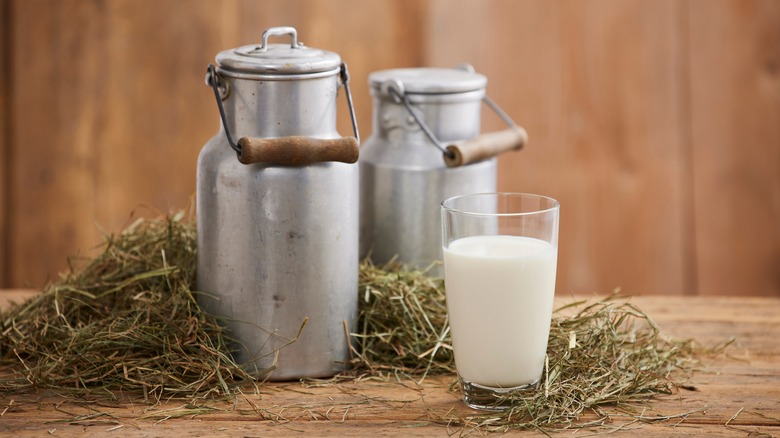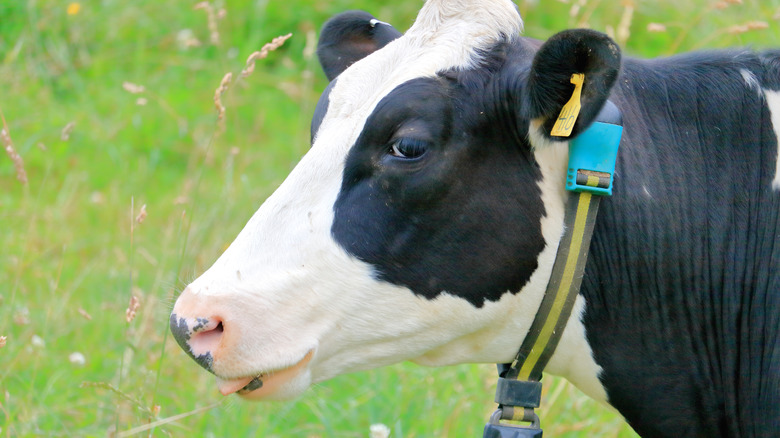How Milk Makes Its Way From The Farm To Your Fridge
Be it a tall glass during a midnight kitchen raid or accompanying a homemade chocolate chip cookie, few beverages are more satisfying than milk. Because it's so readily available, we sometimes forget how amazing it is. Before refrigeration, milk was delivered to homes by milkmen. Today, most people have refrigerators and purchase milk at the supermarket. Thankfully, we can rely on the Food and Drug Administration (FDA) safety standards for fresh, safe milk. So, how do the dairy farmers fulfill these health standards from the cow to your refrigerator shelf?
As we know, after a cow gives birth, it needs plenty of food, water, and shelter to produce milk efficiently. In some dairies, a cow's needs are provided in a natural setting that includes grazing. Dairies may often use a more controlled approach. They feed cows grain-based food as well as supplements, and the cows are frequently confined (per the U.S. Department of Agriculture). Both styles of farming include milking two to three times a day (per Midwest Dairy). However, the pastured cattle may be closer to your idyllic vision of happy roaming milk cows. Regardless of its source, milk gets hi-tech once it leaves the cow. The milking begins with a machine that recreates the sucking sensation of a calf. The milk is refrigerated in tanks at 39 degrees F (per eXtension Farm Energy website), where it can stay up to 48 hours. It's gently stirred during this time to keep it from separating, explains Dairy Australia.
From Farm to Fridge
Next the milk is transported from the farm to a lab in temperature-controlled tankers. The drivers are also technicians who perform quality analysis before loading it (per The Texas Milk Hauler's Training Manual). Upon arrival at the lab, milk is tested for antibiotics and temperature before entering the facility. Once accepted, the milk undergoes rigorous composition and health standards tests (via the FDA).
Authorized milk then begins a three-step process. First, it's heated to 161 F(72 C), held there for at least 15 seconds, then quickly rechilled (per the International Dairy Foods Association). This process is called pasteurization (per Undeniably Diary). Heating the milk kills bacteria that can be present in raw milk, such E. coli, and salmonella. Next, the milk is homogenized by pressing it through an atomizer to reduce the size of the fat globules. Homogenization prevents cream separation, provides a longer shelf life and standardizes flavor and texture (per Horiba).
The final step in the process is separation. Encyclopedia Britannica informs us that centrifugal force is used to remove fat and create the different types of milk: one and two percent and the skim milk so many people enjoy. Next, milk is packaged, labeled, and shipped to your grocery store. All with the utmost attention to cleanliness and temperature. If your enjoyment of milk includes a vision of cows out to pasture look for an ASPCA animal welfare-approved label. Undoubtedly, milk makes an epic journey from the farm to your fridge.

